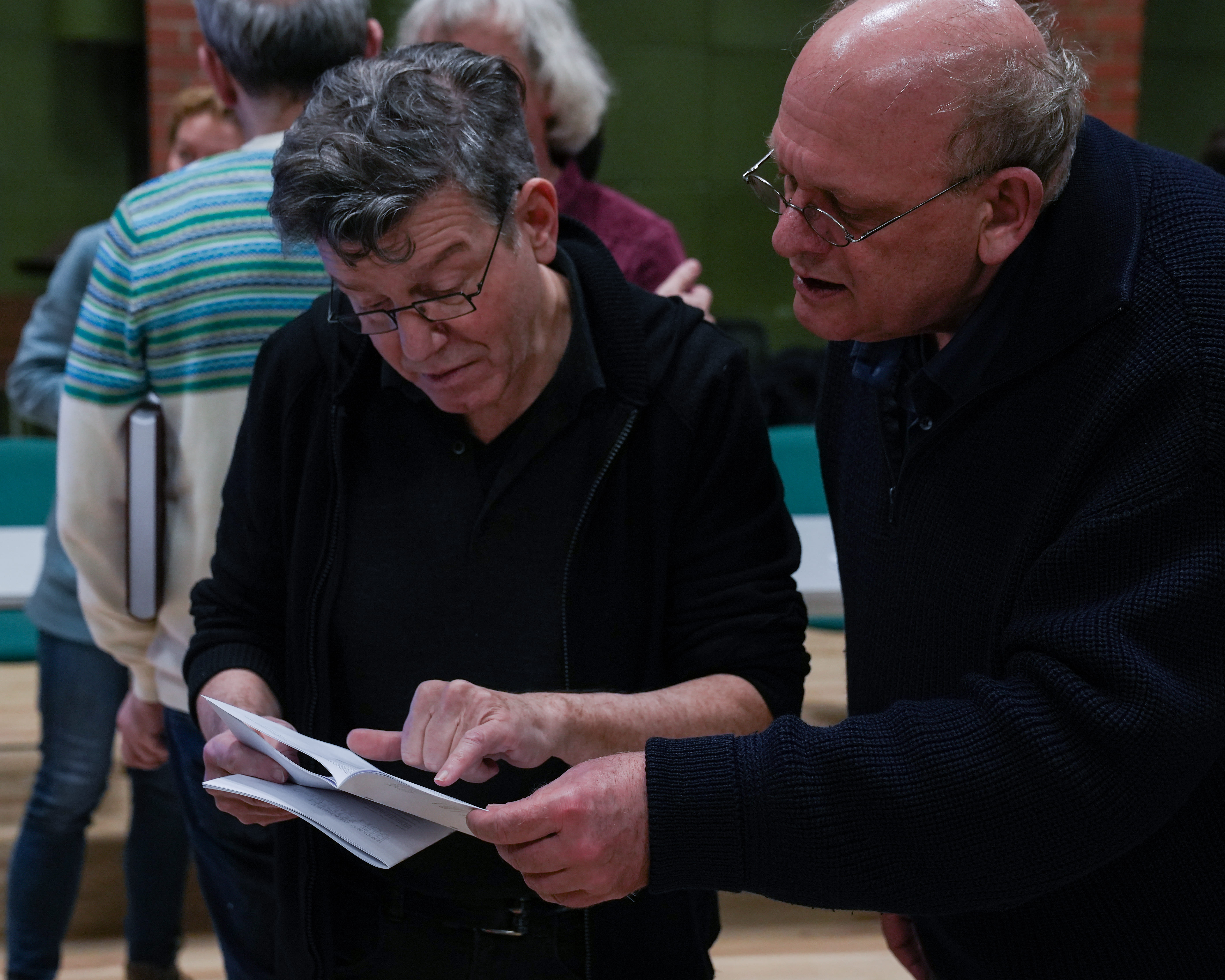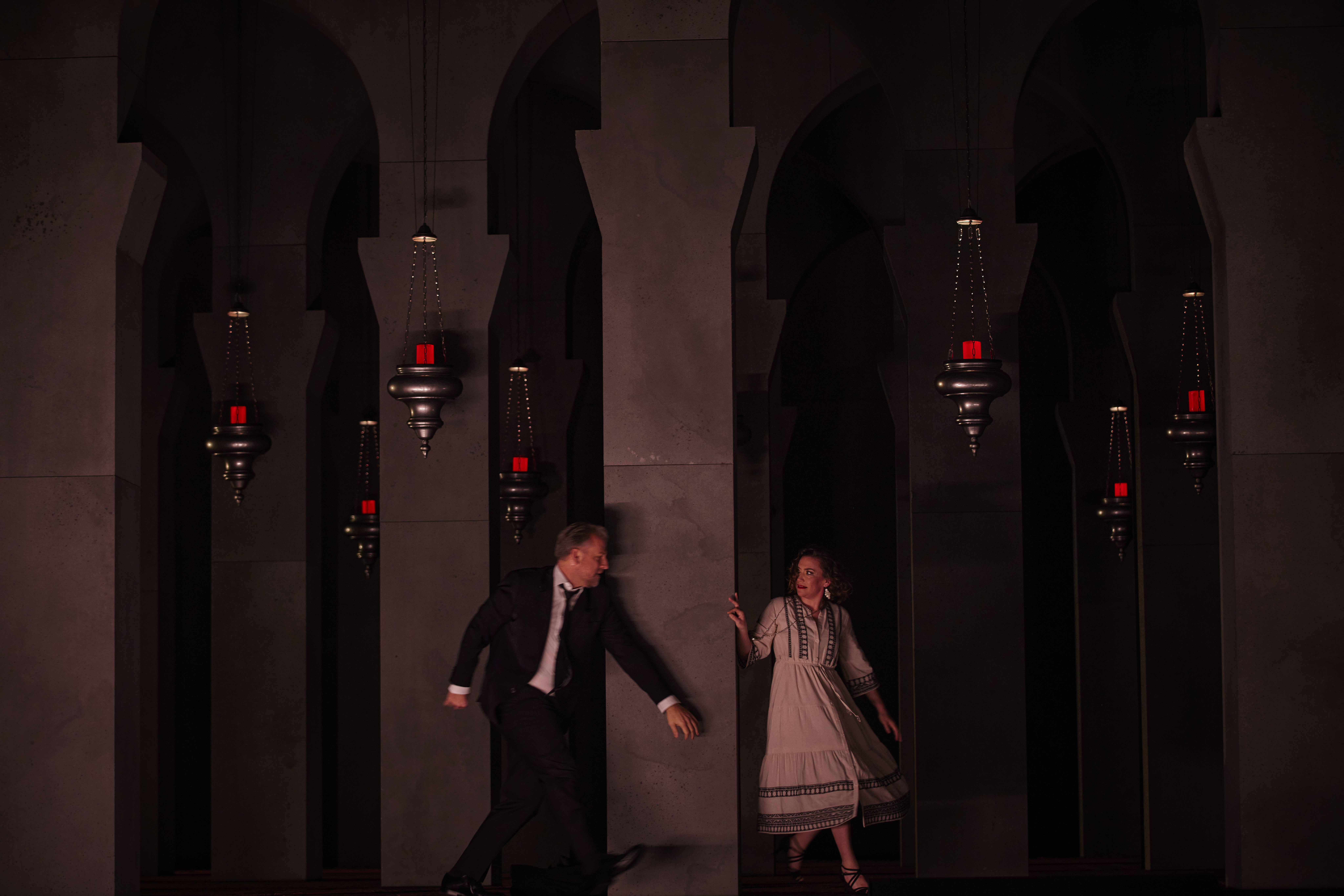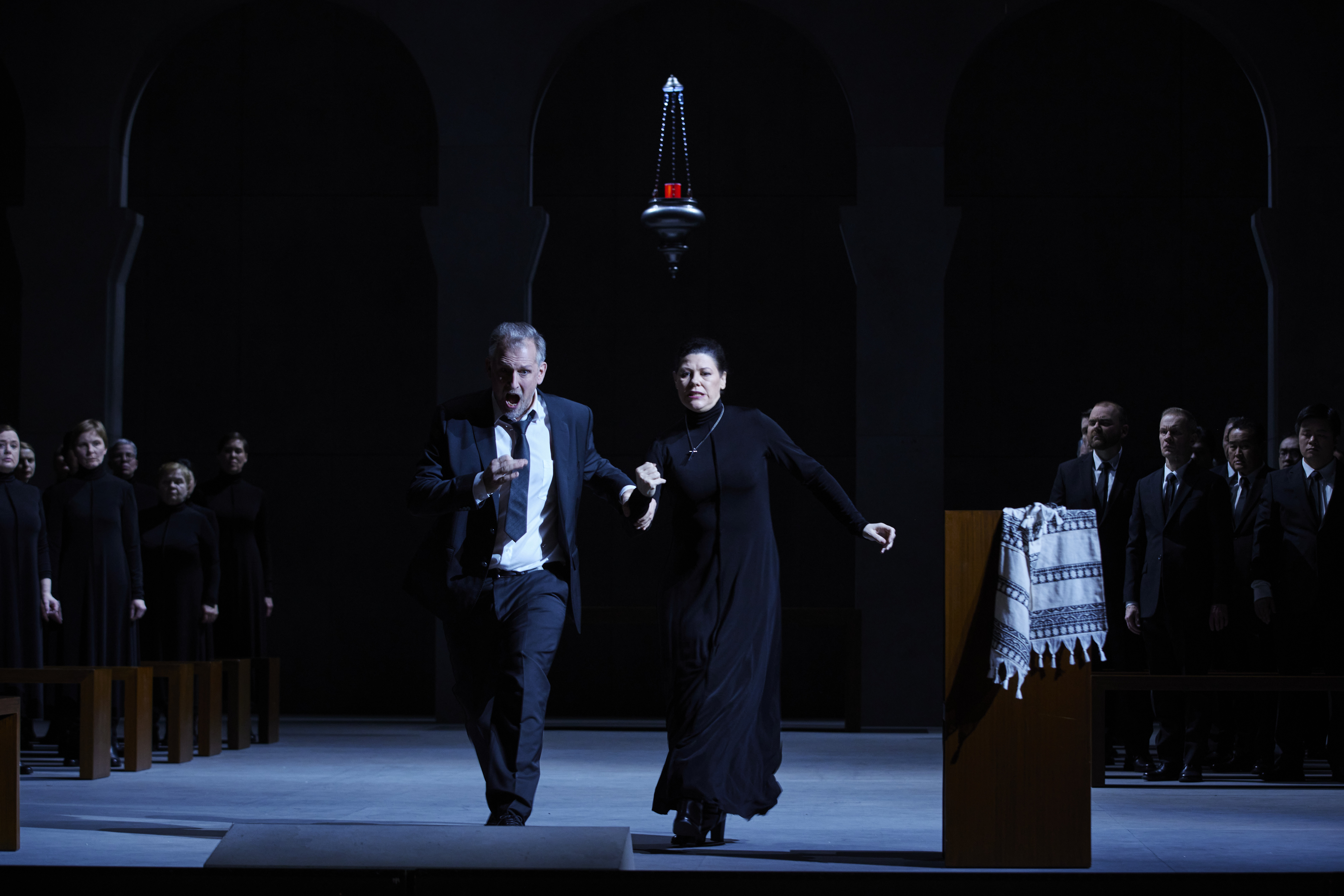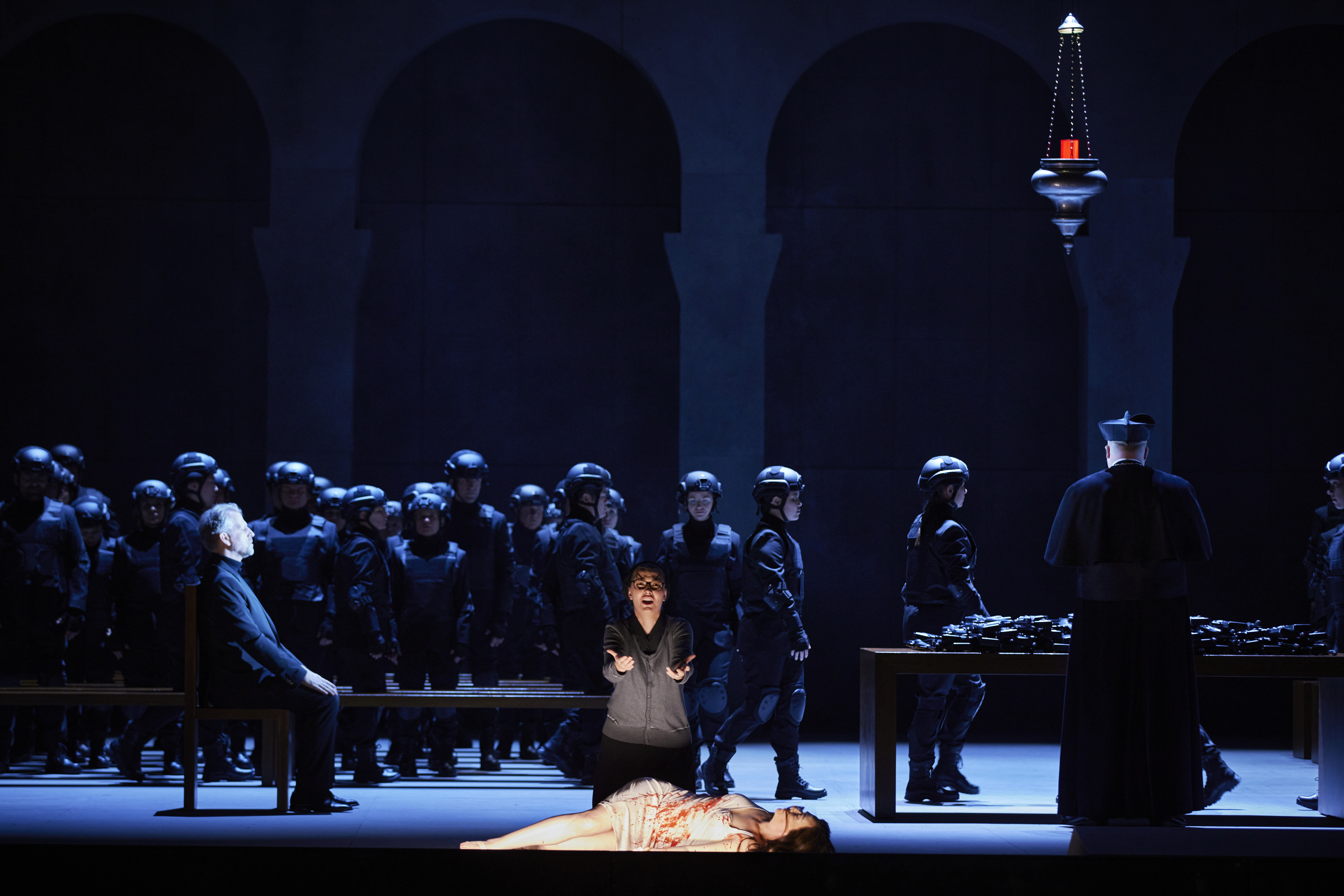February 10th, 2024
By Oxana Arkaeva
It is not self-evident nowadays for the newly composed opera to receive extended publicity and recognition before its actual presentation. The days when devoted to modern opera connoisseurs would go on pilgrimage throughout the world, let alone Europe or Germany, to witness such an event are long over. Partially due to steeply rising fuel prizes, train, or plane travel costs. Partially because of the ongoing decrease of opera visitors due to the demographic shifts. However, the world premiere of Detlev Glanert’s opera “The Jewish Woman from Toledo” on February 10th, 2024, at the Semperoper in Dresden defied this trend. The event garnered widespread press and media coverage, generating enthusiastic anticipation throughout the German opera community.
Glanert, a highly performed opera composer born in Hamburg and currently residing in Berlin, is recognized as one of Germany’s leading contemporary composers. His extensive portfolio spans various genres, with opera holding a significant place in his artistic oeuvres. “The Jewish Woman from Toledo” follows Glanert’s previous opera, “Oceane,” premiered on April 28th, 2019, at the Deutschen Oper Berlin. In this new work he continues his collaboration with librettist Hans-Ulrich Treichel and stage director Robert Carsten, adapting the five-act dramatic play by Austrian playwright Franz Grillparzer.

The story unfolds in the Castilian Toledo in 1195. Rahel, a young Jewish girl, is fascinated by the grand palace of Spanish King Alfonso VIII. Despite warnings from her sister Esther, Rahel climbs the palace walls to explore its gardens. The King, seeking an escape from court life, encounters the sisters, and he and Rahel fall in love. Ignoring warnings, they retreat to the King’s mansion, jeopardizing his marriage and duties. Queen Eleonore, seizing the opportunity, plots to depose the King, accusing him of infidelity and insanity. In a manipulated confrontation, Alfonso signs a decree sealing Rahel’s fate. The story ends with Rahel’s murder, Esther mourning, and a prophecy of God’s revenge on Alfonso.

The production’s remarkable success is attributed to the exceptional artistic work both on and off the stage, in the orchestra pit, and the seamless collaboration among the composer, stage director, and conductor. Glanert skillfully utilized a plot that served as an ideal template for a deeply moving narrative, complemented by excellent composition. Guided by his visual interpretation of the text and drama, Glanert’s score features a palette of dark tones occasionally interrupted by vibrant red-yellow-orange splashes. The grand romantic orchestra scenes are juxtaposed with exotic passages played on the Ud, a Middle Eastern short-necked lute expertly performed by Nassib Ahmadieh. The Ud’s soft, warm tones beautifully contrast the robust sound of the orchestra and majestic choir singing. Glanert employs varied dynamics, atmospheric interludes, and diverse instrumental sets to achieve a significant acoustic and emotional impact. The Saxon State Orchestra, conducted by Jonathan Darlington, performs with a unified breath, conveying the musicians’ dedication and enthusiasm for Glanert’s score. Darlington masterfully controls the grand orchestra, capable of producing powerful sounds and delicate moments with barely perceptible pianissimi.

This period in Spanish history marks a pivotal moment in the Reconquista. The drama unfolds amidst an ongoing war where not only Moors fought against Christians, but Christians also fought amongst themselves. Robert Carsten and his team visually enhance Glanert’s and Darlington’s work. The medieval castle of Spanish King Alfonso VIII sets the scene in the first act, while the inner premises of the King’s country house, the Spanish court, and Toledo Cathedral form the backdrop for subsequent acts. Carsten’s stage design, influenced by Francisco Goya’s blackish color scheme, complements Glanert’s orchestral painting. Cold, dark grounds and rooms are contrasted with red-yellow lanterns in various settings. The choreography, led by Marco Berriel, transforms the Semper Oper choir (superbly directed by Jonathan Becker) into different characters throughout the performance: peacefully praying Arabs, Jews, and Christians; a stiff group of court functionaries; a plundering mob; and a bloodthirsty army. Glanert reinforces the action with the choir singing forbidden by the catholic church psalms, enhancing the impact of the Rahel’s murder scene and the subsequent chaos caused by violent mob of marauders. In the end of performance, the video projections of bombed ruins and marching troops bring the audience abruptly back to reality.

As the curtain fell, a storm of “Bravi”, stomping on the floor, and enthusiastic whistling erupted and lasted for at least 10 minutes. Everyone on stage, in the pit, and in the audience celebrated this outstanding performance. One can only hope that this remarkable piece of contemporary music theatre will continue to be performed in both large and small theaters and opera houses.
The following performances are on February 26th, as well as on March 1st and 8th, 2024.
Cast:
- Composition Detlev Glanert
- Libretto Hans-Ulrich Treichel
- Conductor Jonathan Darlington
- Staging Robert Carsen
- Stage design Robert Carsen, Luis F. Carvalho
- Stage director assistant Gilles Rico
- Costumes Luis F. Carvalho
- Light Robert Carsen, Peter Van Praet
- Videodesign Martin Eidenberger
- Choreography Marco Berriel
- Choir Jonathan Becker
- Dramaturgy Martin Lühr, Benedikt Stampfli
- Rahel Heidi Stober
- Esther, deren Schwester Lilly Jørstad
- Alfonso VIII., König von Kastilien Christoph Pohl
- Eleonore von England, dessen Gemahlin Tanja Ariane Baumgartner
- Manrique, Graf von Lara Markus Marquardt
- Don Garceran, dessen Sohn Aaron Pegram
Saxon State Opera Choir Dresden
Saxon State Orchestra Dresden
Commissioned by the Semperoper Dresden
One Comment Add yours